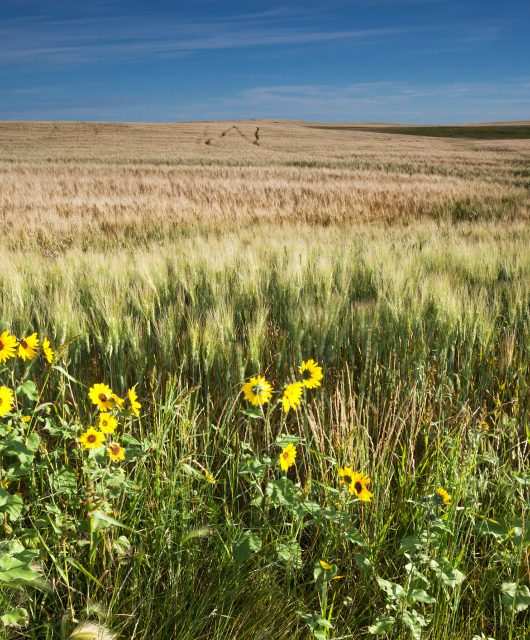In the last 50 years, bird populations that live in Canada’s prairies have declined by 60 per cent.
Given the size of these populations, this means that millions of birds have disappeared from this grassland wilderness since the 1970’s. I don’t know about you, but I find this statistic alarming.
Our friends at the Canadian Wildlife Service (CWS) have measured this decline during that time and partners at the University of Saskatchewan are working on why this decline is happening. So far, the research shows that the main culprits of this decline are habitat loss, mowing/harvesting, disturbance, pesticides, and food supply. Let’s explore these a bit.
Grassland Migrants
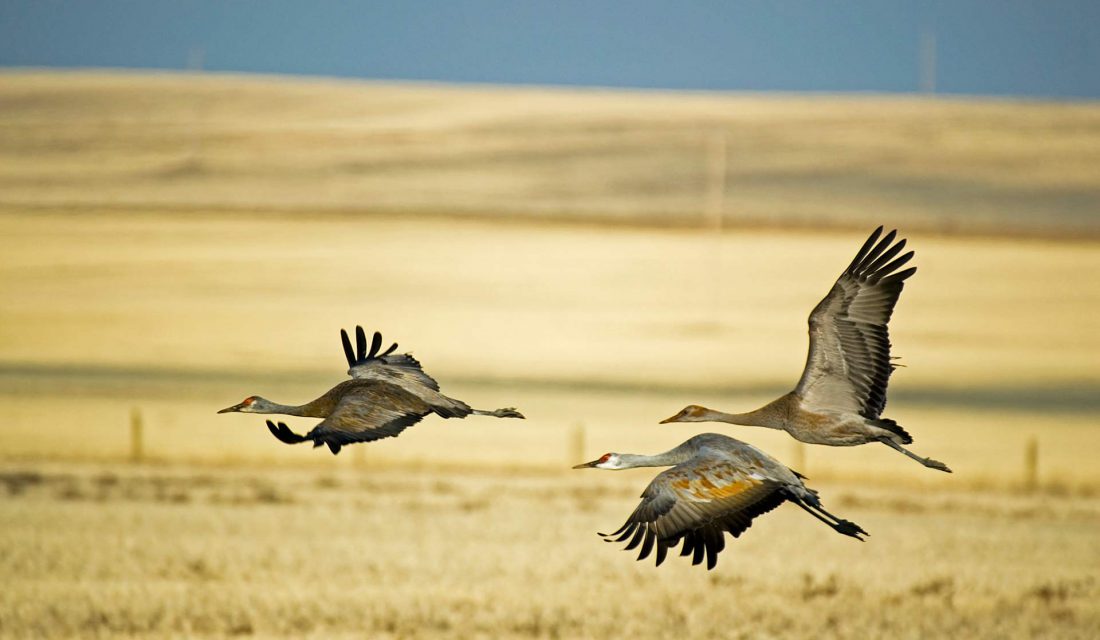
Wait. First things first. The type of birds that are declining on the grasslands are migrants— they spend their winters in the south and fly north to the Great Plains to breed in the spring. This means they are building nests, laying eggs, and raising chicks on grasslands (mostly) right when the peak growing season happens in Canada. The declines that we’re observing are due largely to this unfortunate coincidence. Okay, back to the reasons for the decline.
Habitat Loss
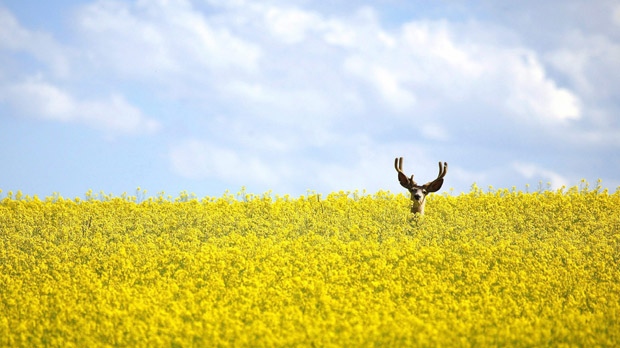
Habitat loss is something that has been happening since Europeans first began settling the Great Plains. Turning native grasslands into crops and non-native pastures removes habitat essential for birds that nest on grasslands. We know that birds select nesting sites based on the type of grasses they prefer as well as how thick and tall that grass grows—some birds like short and sparse grass, others like tall and thick. Converting this to wheat, canola, or alfalfa changes all of this, leaving grassland birds with fewer places they can nest.
Mowing and harvesting will destroy nests that have been built on the ground; a common spot for grassland breeding birds. For years, bird conservationists have been working with land mangers to delay spring mowing to give grassland birds a chance to finish nesting. CWF has promoted No Mow May not only to protect Monarch Butterflies, but also grassland birds.
Disturbance effects are similar to mowing but are the result of intensive cattle grazing. Cattle can trample nests, which is not a problem if both the nests and the cattle are spread out. But as the patches of grass for both nesting and grazing get smaller and fewer, the nest and cattle become more concentrated and trampling more of an issue.
Pesticides
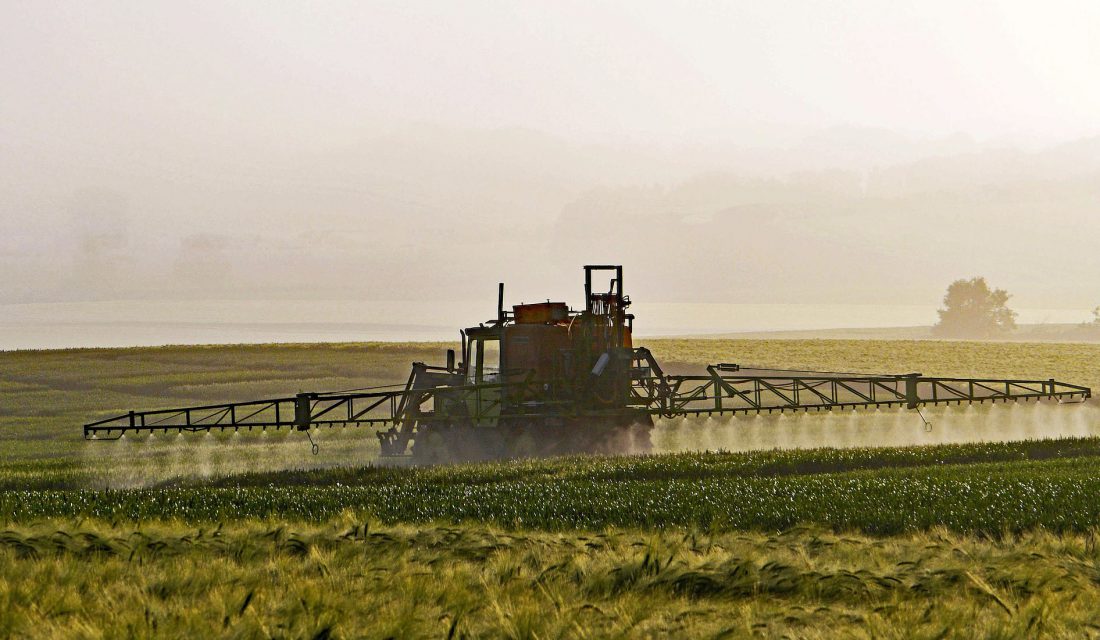
Pesticides are a big one that have direct effects on individual birds. Although pesticides are targeted towards pest insects and noxious weeds and not birds, birds eat, drink and breathe pesticides that are applied where they live. Pesticide toxicity has been shown to affect bird health and their ability to reproduce (remember the effect of DDT on Bald Eagle shell thickness?).
Food supply is the indirect effect of pesticides on birds. Even though many grassland breeding birds eat seeds, they feed their nestlings insects so that they can grow big and strong enough to migrate south come September. The insects that bird parents are feeding their young are often those same insects that are crop pests—grasshoppers and caterpillars. Using pesticides to reduce insect densities to protect our food supply reduces the food supply for the grassland breeding birds.
Which Birds are Affected
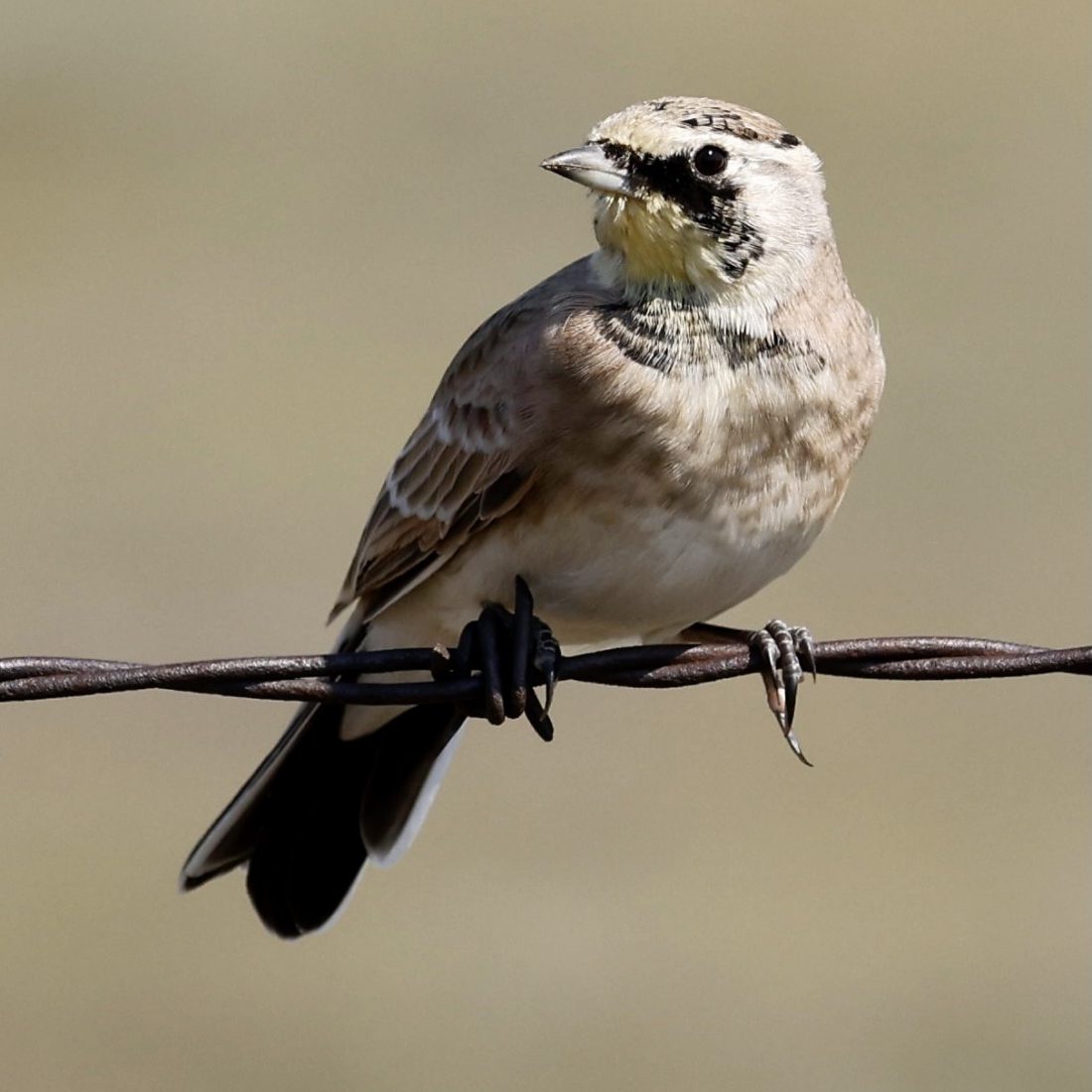
What birds are we talking about? Some of you may not be familiar with the birds common on the Canadian prairies. Among the hardest hit species are the Lark Bunting, Thick-billed Longspur, and Chestnut-collared Longspur that are declining at a rate of about eight per cent per year. Others, like the Long-billed Curlew and Sprague’s Pipit are declining more slowly, two per cent per year, but their populations are already low and they can’t afford to decline that fast. Of the 17 bird species measured by the CWS, 11 were declining in Canada, and the others were barely growing.
At the Canadian Wildlife Federation, we are very concerned about this trend. Our conservation efforts on the prairies are focused on conserving native grassland habitat for breeding birds and using science to further demonstrate the value of natural grasses to insect biodiversity and hence bird populations. We are working with ranchers to improve practices that will protect natural grasslands and with policy makers to remove incentives to turn natural grasslands into monoculture crops. Grassland birds are an incredible part of Canadian natural heritage and without action now, many may not be part of Canada’s wilderness future.


